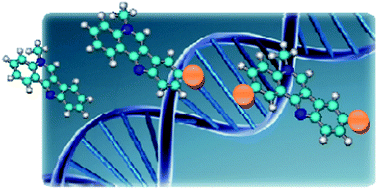Selective interaction of methylindoloquinolines with DNA
Abstract
Interaction of three medically potent indoloquinoline drugs with model DNA has been studied. The three indoloquinoline derivatives chosen in the present work are 5-methyl-5H-indolo[3,2-c]-quinoline (MIQ), 8-chloro-5-methyl-5H-indolo[3,2-c]quinoline (CMIQ), and 2,8-dichloro-5-methyl-5H-indolo[3,2-c]quinoline (DCMIQ). The compounds are found to interact with DNA in their ground electronic states. The mode of interaction has been studied using steady state fluorescence spectroscopy coupled with circular dichroism (CD) spectroscopy. The change in fluorescence properties of the drugs confirmed their binding interaction with the DNA double helix whereas the CD signals were used to analyze the structural changes of the DNA due to the process. Fluorescence quenching studies and CD spectra indicate that the drugs intercalate into the DNA. Moreover, it has been noticed that the chloro derivatives of the indoloquinoline drugs bind more efficiently to the DNA due to hydrophobic interaction and thus enhance the DNA melting temperature. Sequenced DNA oligos have been used to confirm the selectivity in binding of the drug molecules to DNA.


 Please wait while we load your content...
Please wait while we load your content...